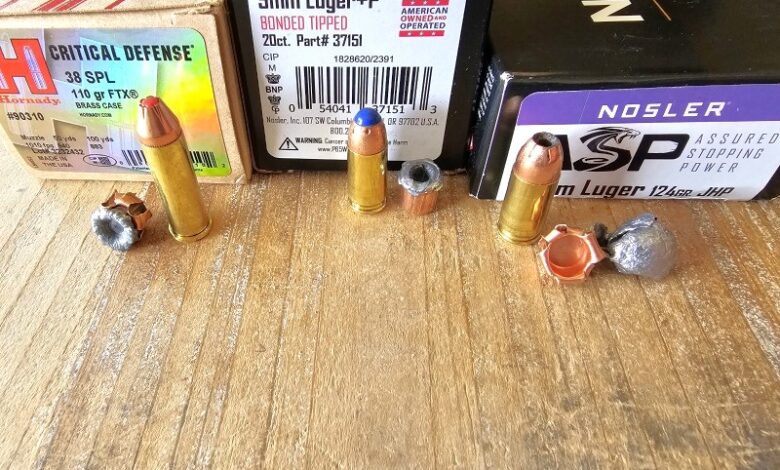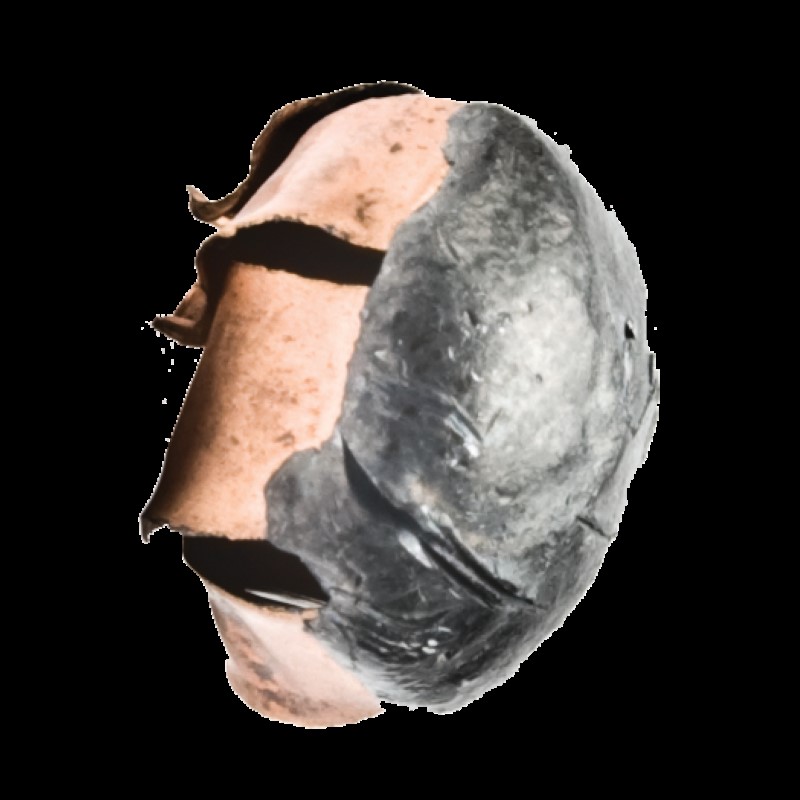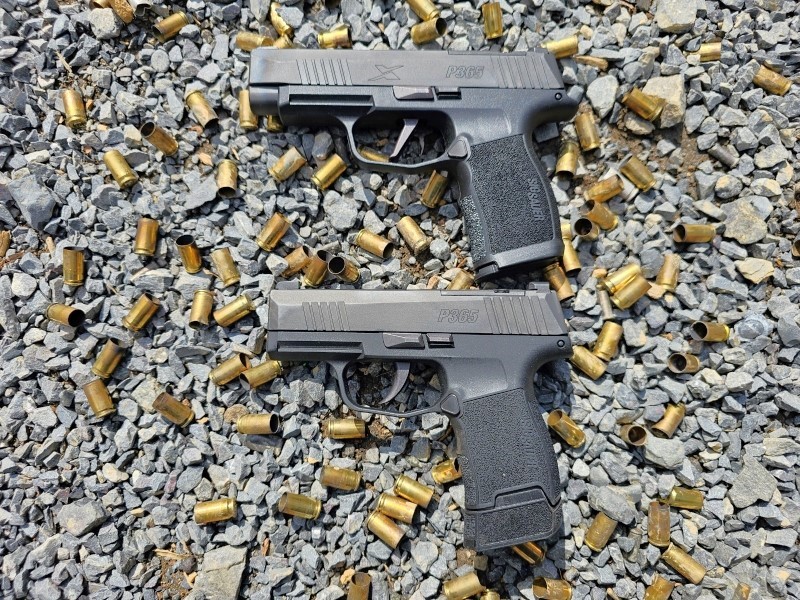Bonded vs. Non-Bonded Ammo For Self-Defense

When it comes to self-defense ammunition, does it matter whether the bullet is bonded or non-bonded? How does bonding affect the performance of ammunition? What is bonding? Simply put, it’s the act of securing a bullet’s core to its jacket. Many manufacturers won’t give away their trade secrets of how they bond the jacket to the bullet, but some will admit they use a soldering process in which the lead core is melted, which makes it fill the available space and adhere to the bullet’s jacket. Other methods include electrochemical means in which the jacket is applied to the outer surface like plating.
But how a bullet is bonded isn’t really what we’re here for, right? Let’s dive into why bonded ammunition might be good (or bad) for self-defense applications.
Why Bond The Bullet?
Bonding causes the bullet’s jacket and core to hold together and not separate when it hits a solid medium, which, in the case of defensive ammunition, would mean a bad guy.
One school of thought believes that bonded bullets are more effective when they hold together because the solid projectile that stays together will usually penetrate more deeply into the attacker. Penetration is good because it has a greater potential to reach vital organs, which helps to shut an attacker down. Bullets that fail to penetrate deeply enough can often fail to stop an attacker.
The other school of thought goes along the lines that a bullet that breaks up inside the attacker creates a few wound channels, which multiplies the wounds. More pieces equals more wounds.
Which one is right? Data points toward the bullet holding together as being a good thing. But honestly, I won’t get my heart rate up if the bullets I’m using aren’t bonded.
One area where non-bonded rounds sometimes suffer is when they have to penetrate certain materials, such as auto glass, which sometimes causes the jacket and core to separate. Bonded bullets seem to hold up better when put through their paces with the FBI’s test protocol, which many law enforcement agencies nationwide have also adopted.
Expansion
I wanted to get some photos of expanded bullets, both bonded and non-bonded types. The thing is, I didn’t have any ballistic gelatin on hand (it’s a bit beyond my capabilities). The next best way I could come up with to cause bullets to expand is to fire rounds into water jugs that were lined up on a table.
I’m fully aware that this isn’t nearly as scientific and controlled as the tests that the FBI conducts in their ammunition testing. However, unlike the FBI, I don’t have 10% ballistic gelatin that they do. And so I fired a couple of rounds into water jugs. Aside from all of that, it’s fun to fire the rounds into the jugs to see how the projectiles behave.
Bear in mind, though, that a significant portion of the human body is comprised of water, so there is that.
Beyond that, I figured firing the rounds into something more than just a paper target would be a little more telling. Sure, shooting into paper is fine for testing accuracy and reliability in the pistols, but it doesn’t give us much more data. If nothing else, take the water “testing” as an entertaining side note. Interestingly, most of the rounds that are fired into water jugs strongly resemble rounds that were fired into ballistic gel in their expansion.
Ammo Types
For this article, we examined several different types of ammo. They were all from very reputable manufacturers with sterling reputations in the ammo industry.
Nosler ASP
Nosler’s history in ammunition circles was firmly cemented back in 1948. They’re known for using top-shelf components and producing some of the best ammo in the industry.
We looked at two loadings from their defensive ammunition line. One such load is called ASP (Assured Stopping Power), which is a hollow point (or controlled expansion) load. This load is also listed as Match Grade, and accuracy testing with it proved that it was, indeed, accurate.
The ASP features a skived bullet jacket that delivers expansion over a wide range of velocities. The mouth of the hollow point slopes downward acutely so this particular ammunition feeds very reliably in pistols.

This is a non-bonded 9mm 124-grain bullet with a standard muzzle velocity of 1,150 feet per second. It’s also available in .40 S&W, 10mm, and .45ACP.
The core is lead, with a jacket consisting of 95% copper and 5% zinc.
So far, I’ve fired this ammo through the Springfield Hellcat and Hellcat Pro, the Glock 43X, and the Sig Sauer P365 and P365XL. It performed as expected in each platform.
When fired into water jugs, it penetrated four one-gallon jugs and broke into three pieces (two pieces were the core, and one piece was the jacket). The expansion was violent, to say the least. I carry this ammunition with my Sig P365 and P365XL regularly, so I trust it with my life. That’s saying something.

Nosler Bonded Tipped
The other Nosler round we checked out was their Bonded Tip round. This is one of the more unique rounds we’ve worked with, given that it has a polymer ball where the hollow cavity would normally be. The theory is that when the round hits the target, the polymer ball is smashed back into the bullet, causing expansion just like a hollow point.
This is positive on a few notes. First, it eliminates the usual problem that hollow points sometimes encounter, which is the hollow point plugging up and the bullet acting like a full metal jacket round. It can’t happen with this one.
Next, this round has a complete full metal jacket profile, so feeding should be as reliable as FMJ rounds. Spoiler alert: this ammo does feed with 100% reliability in the several platforms tested.
Finally, some jurisdictions prohibit people from carrying hollow point ammunition for defense. Not many, but there are a few out there. Well, this defensive ammo is not a hollow point, but it does perform like it. This 124-grain ammunition is rated as +P with a muzzle velocity of 1,200 feet per second.
This round also penetrated four one-gallon water jugs before coming to rest. Expansion was very controlled and uniform; it actually came out looking like a perfect little mushroom. I have no doubt that it will be effective at stopping bad guys. That, coupled with its FMJ-type profile and ease of feeding, makes this round an interesting and attractive candidate for both concealed carry and duty.
Some people have asked whether Nosler ammunition is worth the money. In my mind, it is some of the best, most consistent ammunition, and it’s definitely worth the money.
Hornady Critical Defense
This is another round with a full metal jacket profile, in that there is a polymer ball in the tip instead of a hollow cavity. As with the other such round in this article, it also enjoys the same advantages: reliable expansion, and it’s not legally a hollow point.

The particular round tested here is a .38 Special, 110-grain Critical Defense round with a listed muzzle velocity of 1,010 feet per second.
On the Hornady website, they explain that this round is normally loaded into nickel cases, but there is currently a shortage of nickel, so it’s being loaded into brass cases. And sure enough, the ammo I have is brass-cased. It still performed very well, though.
The Critical Defense round is not bonded; however, it held together very well when fired into water. Expansion was vigorous, too. I fired it from a Smith & Wesson 642 revolver. This round is standard pressure and was not bad as far as recoil is concerned. Hornady Critical Defense ammo is also available in a variety of calibers other than .38 Special.
Final Thoughts
This was a quick look at three rounds from very reputable ammo makers, as opposed to a grueling, high-tech ammo test. We can say, with all authority, though, that each type of ammunition ran perfectly in our test handguns. Accuracy with all rounds was also impeccable.
Each of these rounds appears to be completely viable for defensive use, and I’m actually carrying some of this ammunition in my guns. I still maintain that shot placement is the paramount factor in effectiveness when using handguns for defense. Sometimes, the projectiles, no matter how high quality they are, don’t expand or only partially expand. In such cases, the rounds need to be on target.
The difference in performance between the bonded and non-bonded rounds seems to be relatively similar in our very unscientific tests. Bear in mind, however, that most of the rounds that are issued by large agencies across the US are of the bonded variety. Does that mean you have to use bonded bullets? Not necessarily. It is, after all, a free country.
Another factor to consider is how you’re realistically going to be using this ammunition. For police and other agencies, the FBI protocol is more relevant in that their requirement to be able to fire through automobile metal and glass, as well as other mediums, comes into play on their job. As a civilian, do I need bullets that penetrate most of those mediums? Will I be firing at suspects who are in cars? These are questions that we should be asking. I know it sounds cool to use the same bullets that the FBI does, but I need to ask myself if my mission and parameters resemble theirs.
Does it hurt to use the same ammo that major law enforcement agencies use? Probably not, as it’s been extensively tested. Do I need the same performance that they are after? Realistically, it’s very doubtful that I will. In any case, these rounds are worth the expenditure.
The post Bonded vs. Non-Bonded Ammo For Self-Defense appeared first on The Mag Life.
Read the full article here






